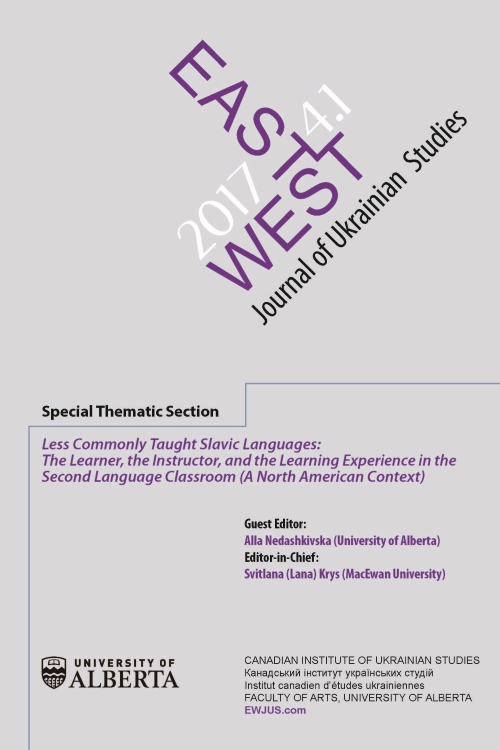Slavic and East European Language Programs and Heritage Language Communities
Slavic and East European Language Programs and Heritage Language Communities
Author(s): Susan KresinSubject(s): Language studies, Sociolinguistics
Published by: Canadian Institute of Ukrainian Studies at The University of Alberta
Keywords: heritage language; Slavic LCTLs; Slavic languages; West Slavic;
Summary/Abstract: Among Slavic and East European heritage communities, the post-1989 geopolitical situation in Central and Eastern Europe has changed both emigration patterns and core aspects of the relationship between speakers in the homeland and abroad. Many speakers have both an enhanced motivation to maintain their heritage languages and greater resources to do so. As a reflection of this increased interest in Slavic and East European heritage languages, recent years have witnessed a rise in the number and scope of community language schools, established primarily by parents who wish to ensure that their children maintain active use of their heritage languages. At the same time, many Slavic and East European language programs at the college level have increasingly come under threat, due to the combination of reduced enrollments, greater administrative focus on class sizes, and a loss of federal funding. In this paper, using Czech as the base language, I suggest that by placing a greater emphasis on connections with heritage communities, we may be able to enhance the viability of Slavic and East European programs at the college level. This potential is supported by a marked increase in research on heritage language learners over the past two decades, which provides a foundation for curricular adjustments that address the specific needs of heritage language learners.
Journal: East/West: Journal of Ukrainian Studies (EWJUS)
- Issue Year: 4/2017
- Issue No: 1
- Page Range: 11-32
- Page Count: 22
- Language: English

